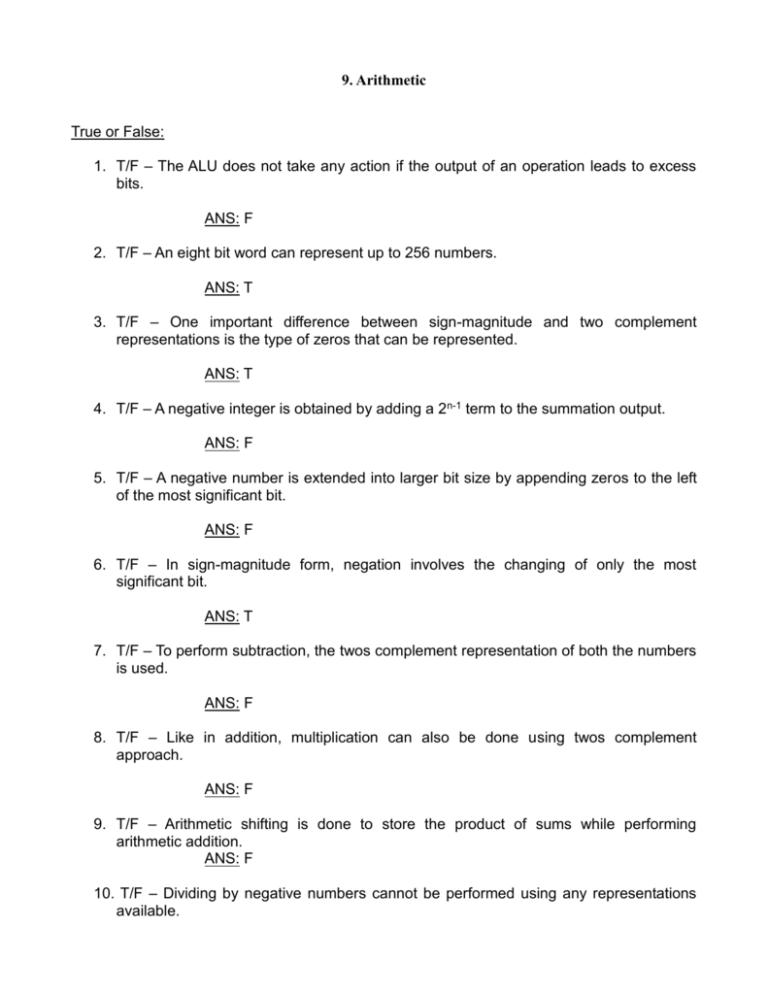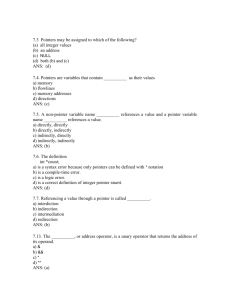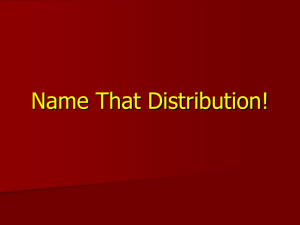Chapter 9
advertisement

9. Arithmetic True or False: 1. T/F – The ALU does not take any action if the output of an operation leads to excess bits. ANS: F 2. T/F – An eight bit word can represent up to 256 numbers. ANS: T 3. T/F – One important difference between sign-magnitude and two complement representations is the type of zeros that can be represented. ANS: T 4. T/F – A negative integer is obtained by adding a 2n-1 term to the summation output. ANS: F 5. T/F – A negative number is extended into larger bit size by appending zeros to the left of the most significant bit. ANS: F 6. T/F – In sign-magnitude form, negation involves the changing of only the most significant bit. ANS: T 7. T/F – To perform subtraction, the twos complement representation of both the numbers is used. ANS: F 8. T/F – Like in addition, multiplication can also be done using twos complement approach. ANS: F 9. T/F – Arithmetic shifting is done to store the product of sums while performing arithmetic addition. ANS: F 10. T/F – Dividing by negative numbers cannot be performed using any representations available. ANS: F 11. T/F – Small and large fractions can also be represented using twos complement floating point representation. ANS: F 12. T/F – The scientific representation for floating point numbers uses the biased representation. ANS: T 13. T/F – The bias remains the same for 32 and 64 bit floating point numbers. ANS: F 14. T/F – Rounding and guard bits affect the accuracy of floating point calculations. ANS: T 15. T/F – Zero check is performed to see whether the given numbers are positive or negative. ANS: F 16. T/F – Arithmetic exponent overflow is one of the drawbacks of floating point normalization. ANS: F Multiple Choice Questions: 1. The output of an ALU operation is stored at A. ALU itself B. Registers C. Counters D. None of the above ANS: B 2. A type of integer representation A. Sign-magnitude B. Twos complement C. Biased D. All of the above ANS: D 3. In what representation does the number of bit difference is very less between positive and negative numbers. A. Sign-magnitude B. Twos complement C. Fixed-point D. Biased ANS: A 4. Bit representation anomaly for the number 128 was found in A. Sign-magnitude B. Twos-complement C. Biased D. None of the above ANS: B 5. Intermediate results in a multiplier are called A. Sum of products B. Partial products C. Partial Sums D. None of the above ANS: B 6. Booth's algorithm uses this representation to perform binary multiplication A. Twos complement B. Sign-magnitude C. Biased D. None of the above ANS: A 7. When the divisor is subtracted from the partial dividend, we get A. Partial product B. Partial reminder C. Reminder D. Partial quotient ANS: B 8. What representation is used for floating point numbers A. Twos complement B. Sign-magnitude C. Biased D. None of the above ANS: C 9. To represent a floating point number in scientific notation, it requires A. Sign B. Exponent C. Significand D. All of the above ANS: D 10. When the most significant bit of the significand is not a zero, the number is called A. Most significant number B. Normalized number C. De-normalized number D. None of the above ANS: B 11. To represent a 64 bit number, this value is added to the true exponent to represent the exponent field A. 127 C. 63 B. 255 D. None of the above ANS: B 12. This technique is used to handle errors in floating point calculations A. Interval arithmetic B. Digital arithmetic C. Rounding arithmetic D. None of the above ANS: A 13. Floating point addition and subtraction does not involve this step A. Sign check B. Normalization C. Align significand D. None of the above ANS: A 14. These numbers are included to handle exponent overflows A. Normalized B. Bias C. Twos complement D. De-normalized ANS: D 15. Normalization involves A. Multiplication C. Shifting B. Alignment D. None of the above ANS: C 16. The use of de-normalized numbers is called A. Exponent overflow B. De-normalized arithmetic C. Gradient underflow D. Gradient Overflow ANS: C Fill up the blanks: 1. ___________ defines the representation of floating point numbers. ANS: IEEE 754 2. The decimal point in binary and decimal number representations are also called as __________. ANS: Radix point 3. The _______________ bit is used to indicate whether the number is positive or negative. ANS: Most significant 4. The twos complement of a number is obtained by taking ____________ of the number first. ANS: Ones complement 5. A _____________ occurs only when the output of an operation between +ve or -ve integers results in a number that has the opposite sign. ANS: Overflow 6. An operation called _____________ is done to preserve the sign of the number during multiplication. ANS: Arithmetic shift 7. Booth's algorithm based multiplication involves _________ number of additions and subtractions compared other simpler approaches. ANS: fewer 8. _________ algorithm works on unsigned twos complement version of negative numbers to perform division. ANS: Restoring division 9. With floating point division of large numbers using two complement approach, the ______ cannot be represented in fractions. ANS: Quotient 10. The ________________ has the maximum number of bits in the scientific notation of a floating point number. ANS: Significand 11. The __________________ is also called the mantissa. ANS: Significand 12. The value added to the true exponent to become the exponent field is called ________. ANS: Bias 13. ______________ is the default type of rounding practice. ANS: Rounding to nearest 14. ________________ is done to see to make sure the exponents are the same. ANS: Significand alignment 15. Normalization of the final solution of a floating point operation can lead to ___________. ANS: Exponent underflow 16. Rounding up of floating point numbers reduces _________________. ANS: Precision








